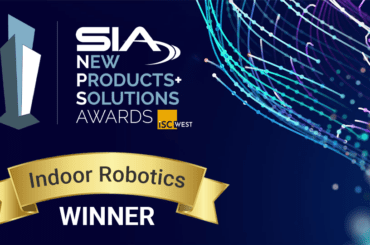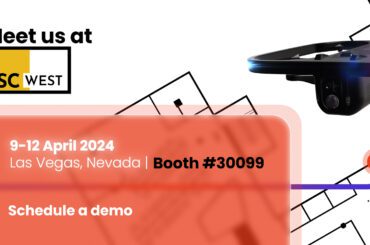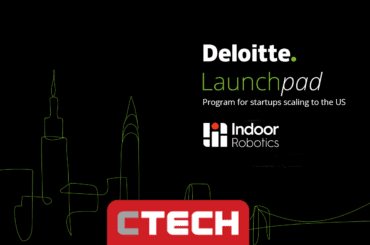The integration of Generative AI (GenAI) with robotics is transforming the landscape of security and inspection. By leveraging advanced AI capabilities, robotic systems are now equipped to perform tasks with unprecedented efficiency and accuracy. GenAI is a subset of artificial intelligence focused on creating new content and data by learning patterns from existing datasets. Unlike traditional AI, which is often designed to recognize patterns and make decisions based on predefined rules, GenAI can generate new, original outputs. This capability makes it particularly powerful for tasks that require creativity and adaptability.
When integrated with robotics, GenAI empowers robots with the ability to understand and interact with their environment in a manner similar to humans. This capability extends far beyond basic automation, enabling robots to perform sophisticated tasks such as semantic sensing, mission planning, and interactive communication. This evolution is particularly beneficial for security managers and executives responsible for maintaining safety and managing facilities. Here’s how GenAI-powered robotics can make a significant impact:
Real-World Applications
Semantic Sensing and Understanding: Robots equipped with GenAI can comprehend their surroundings contextually. For instance, in a security setting, a robot can identify a kitchen, understand not to disturb diners, and recognize objects that don’t belong to the environment, such as a laptop one of the employees forgot in the dining area.. This level of understanding allows robots to perform tasks such as inspection and reporting without causing disruptions.
Mission and Path Planning: GenAI enables robots to plan their missions based on the semantics of their environment in the current context. A command like “Go check if the office is ready for end of day” prompts the robot to identify semantics that are related to the end of day context, such as validating the lights are off, office doors are locked, and no people are in the premises. This semantic understanding transforms how robots execute tasks, making them more reliable and efficient.
Interactive Communication: GenAI allows robots to receive instructions and report back in human-understandable language. Robots can recognize who is interacting with them and provide explanations for their actions. This feature is crucial for security managers who need detailed, understandable reports on security breaches or routine checks.
Indoor Robotics’ GenAI Integration
Indoor Robotics has integrated GenAI into its Control Bridge software, enhancing their functionality for security and inspection purposes. Here’s how:
Data Utilization: By leveraging sensor data, indoor location information, and previous missions data, Indoor Robotics creates a comprehensive AI pipeline. This includes specialty-trained neural network models and a GenAI engine powered by large language models (LLMs) and multi-modality pre-trained transformers. The benefits are multifaceted: predictive analytics allow the AI engine to foresee potential security threats or maintenance needs, enhancing safety and efficiency. Additionally, the AI engine insights are based on specific contexts and historical data, enabling more accurate responses. Continuous learning from each mission ensures the system becomes more efficient and effective over time. This proactive and adaptive approach ensures the AI engine remains highly effective in enhancing security and operational efficiency.
Routine patrols: With GenAI, security managers can easily schedule and automate various routines, such as daily safety patrols, end-of-day routines, and emergency response protocols. This ensures continuous monitoring and the ability to verify or augment tasks as needed. For example, the system can detect people, assess their activity, and generate actionable insights. These automated routines enhance the overall effectiveness of security operations, providing a consistent and reliable approach to facility management.
Professional Inspections and Insights: Combining GenAI with Indoor Robotics’ expertise allows for profession-led detections and automated inspections. The system can provide insights like checking for missing fire extinguishers or ensuring OSHA compliance by validating that all detected employees are wearing the designated gear.

The benefits of implementing GenAI
The integration of GenAI with robotics is transforming the landscape of security and inspection. By leveraging advanced AI capabilities, robotic systems are now equipped to perform tasks with unprecedented efficiency and accuracy. This evolution is particularly beneficial for security managers and executives responsible for maintaining safety and managing facilities. Here’s how GenAI-powered robotics can make a significant impact.
Enhanced Efficiency and Accuracy
GenAI-powered robots can execute repetitive and complex tasks with high precision, significantly reducing the workload of security personnel. These robots can patrol large areas, monitor security cameras, and identify potential threats more accurately than human operators. Additionally, by using GenAI to validate standard AI processes, the system further reduces false alarms, enhancing accuracy and reliability. By minimizing human error and improving the validation of detected events, GenAI ensures a higher standard of security and operational efficiency.
Cost-Effective Solutions
While the initial training of GenAI models can be expensive, utilizing pre-trained models offers a cost-effective alternative. This approach makes advanced robotic solutions accessible to a wider range of businesses, from small enterprises to large corporations. The investment in GenAI-powered robotics can lead to long-term savings by reducing the need for extensive human labor and increasing operational efficiency.
Improved Decision-Making
With the ability to provide real-time data and detailed reports, GenAI-powered robots enhance decision-making processes for security managers. These robots can understand and respond to natural language instructions, simplifying the management of security operations. This capability allows managers to quickly assess situations and make informed decisions, improving overall security outcomes.
Scalability and Flexibility
GenAI enables robots to adapt to various environments and tasks, making them highly scalable and flexible. Whether operating in a small office or a large warehouse, these robots can adjust their functions to meet the specific needs of the environment. This adaptability ensures that businesses can scale their security operations efficiently as they grow.
Looking ahead
While the benefits are significant, there are challenges to consider. GenAI systems require substantial computational resources, and ensuring predictable and repeatable results is crucial for high-precision applications. However, ongoing advancements in GenAI technology are expected to address these issues, making systems more cost-effective and reliable.
The future of GenAI in robotics looks promising with continuous improvements on the horizon. As the technology evolves, we can expect reduced costs, enhanced predictability, lightweight implementations for low-compute systems, and fully aware environments with task-oriented robots performing various functions seamlessly. This vision of pervasive computing will transform how businesses approach safety, security, and maintenance.
Learn more about monitoring indoor environments using AI-powered robotics: Click here






